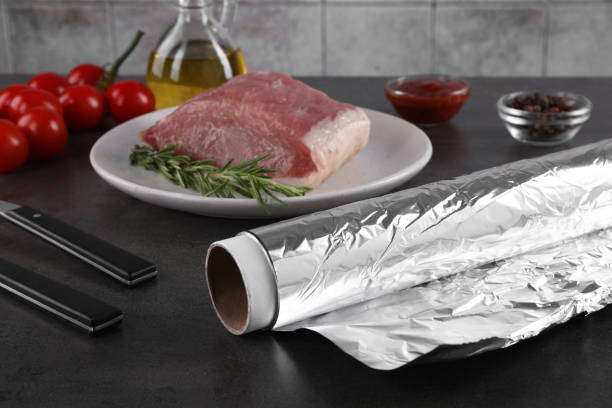MASTERING FOIL COOKING: A COMPREHENSIVE CONVENIENT MEALS
INTRODUCTION: THE VERSATILE MAGIC OF ALUMINUM FOIL IN CULINARY ARTS
Pull Quote: "Aluminum foil isn't just a covering; it's a cooking vessel, a flavor conductor, and a promise of a simpler cleanup."
(I) UNVEILING THE ADVANTAGES: WHY FOIL PACKET COOKING REIGNS SUPREME
1.1. Superior Moisture Retention: The Secret to Succulent Dishes
Result: Meats remain tender and juicy, fish steams to flaky perfection, and vegetables retain their vibrant color and crisp-tender texture, preventing the dreaded dryness often associated with other high-heat cooking methods.
1.2. Flavor Infusion: A Symphony of Taste in Every Bite
Herbs, spices, marinades, and the natural juices of the ingredients meld and intensify, deeply penetrating every component of the dish. This method allows for a more profound and harmonious flavor profile compared to open-air cooking where aromatic compounds can dissipate.
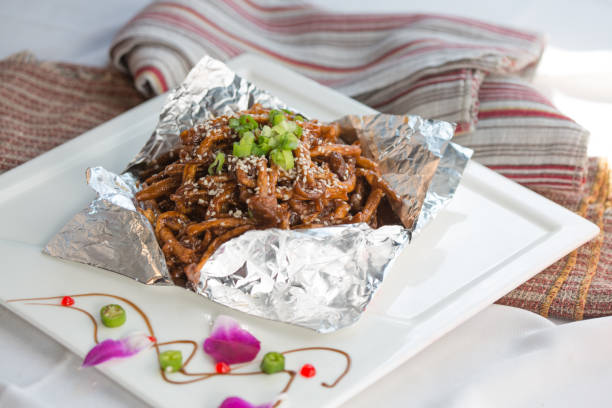
1.3. Effortless Cleanup: The Joy of Minimal Mess
The foil packet itself serves as the cooking vessel, containing all juices, fats, and potential splatters. Once a meal is enjoyed, the foil can often be simply discarded (responsibly, of course!), eliminating the need for scrubbing pots and pans.
1.4. Versatility Unleashed: From Grills to Ovens, Campfires to Kitchens
Grill: Perfect for imparting a smoky char.Oven: Offers consistent, even heat.Campfire: The quintessential method for rustic, outdoor meals.Steamer: Can be used for a gentler cooking approach.
1.5. Portion Control Perfected: Individualized Culinary Creations
This is ideal for households with varying dietary preferences or for meal prepping. Each packet can be customized with different ingredients or seasonings to cater to individual tastes.
(II) THE SCIENCE AND SAFETY OF ALUMINUM FOIL: DEMYSTIFYING COMMON CONCERNS
2.1. Understanding Aluminum: Material Properties and Culinary Applications
2.2. The Great Debate: Is Cooking with Aluminum Foil Safe?
Expert Opinions and Research Findings: Most health authorities, including the World Health Organization (WHO) and the U.S. Food and Drug Administration (FDA), consider aluminum foil safe for cooking within established guidelines. The body is efficient at excreting small amounts of aluminum. However, research has shown that aluminum can leach from foil into food, especially when cooking highly acidic foods (e.g., tomatoes, citrus fruits, vinegar-based marinades) or very salty foods at high temperatures for extended periods. The amount of leached aluminum is generally considered small and unlikely to pose a significant health risk for healthy individuals. However, individuals with kidney disease, who have a reduced ability to excrete aluminum, may need to be more cautious.
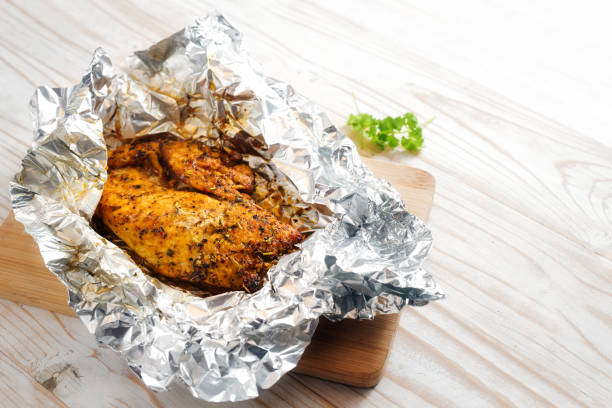
Factors Influencing Aluminum Leaching: Food Acidity: More acidic = more leaching.Temperature: Higher temperature = more leaching.Cooking Time: Longer cooking time = more leaching.Presence of Spices/Salt: Certain spices and high salt concentrations can increase leaching.
2.3. Best Practices for Safe Foil Usage: Minimizing Risks, Maximizing Benefits
Limit use with highly acidic or salty foods: If using, minimize contact time and temperature. Consider using parchment paper as a barrier between acidic food and foil.Avoid prolonged high-heat cooking: Especially with the aforementioned food types.Do not use damaged or old foil: Scratches or corrosion might increase leaching.Store acidic leftovers in non-aluminum containers: Transfer food from foil packets to glass or plastic containers for storage.Consider using heavy-duty foil: It's generally more robust and may be less prone to tearing or reacting.The "Shiny Side vs. Dull Side" Myth For most consumer-grade aluminum foil, there is no functional difference between the shiny and dull sides. The difference is merely a result of the manufacturing process where two layers of foil are milled simultaneously. The side that comes into contact with the highly polished steel rollers becomes shiny, while the other side (that touches the other foil sheet) remains dull. Both sides perform identically in terms of heat reflection or cooking efficacy. Some specialized non-stick foils may have a designated non-stick side.
(III) CHOOSING YOUR CULINARY CANVAS: SELECTING THE RIGHT FOIL AND INGREDIENTS
3.1. Decoding Foil Types: Standard vs. Heavy-Duty vs. Non-Stick
3.2. Ingredient Selection for Optimal Results:
Proteins: From Tender Fish to Robust Meats Fish & Seafood: (e.g., salmon, cod, shrimp, scallops) Cook quickly and benefit immensely from the steaming environment, remaining moist.Chicken & Turkey: (especially boneless, skinless pieces) Cook through well and absorb marinades beautifully.Pork & Beef: (tender cuts like tenderloin, or ground meats) Can be delicious, but tougher cuts may require longer cooking times or pre-cooking.Sausages: (e.g., chorizo, andouille, kielbasa) Add immense flavor and cook well.
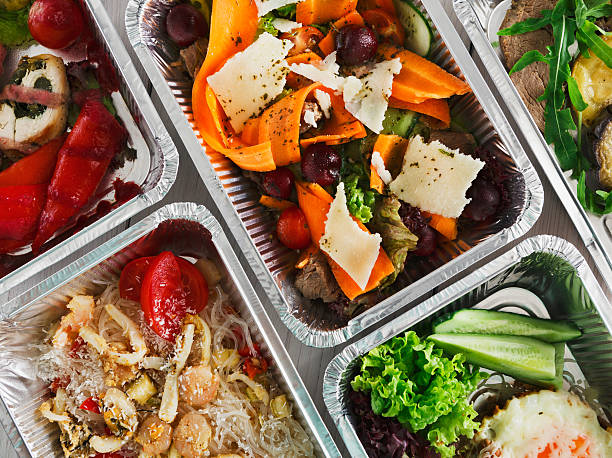
Vegetables: A Rainbow of Possibilities Quick-cooking: (e.g., asparagus, bell peppers, zucchini, mushrooms, cherry tomatoes, spinach)Harder/Starchy: (e.g., potatoes, carrots, sweet potatoes, broccoli florets) Should be cut into smaller, uniform pieces or pre-cooked slightly to ensure they cook through at the same rate as other ingredients.
Aromatics and Fats: The Flavor Enhancers Aromatics: Onions, garlic, ginger, leeks, fresh herbs (rosemary, thyme, oregano).Fats: Butter, olive oil, coconut oil – add moisture and help conduct heat.
(IV) THE ART OF THE PACKET: MASTERING FOIL WRAPPING TECHNIQUES
4.1. The Fundamental Folds: Ensuring a Perfect Seal
The Tent Method: Ideal for Delicate Items Place ingredients in the center of a large foil sheet. Bring the two longest sides of the foil together above the food. Fold these edges down together multiple times (at least 1/2-inch folds) to create a tight seal, leaving some headspace above the food (the "tent"). Fold and crimp the two shorter ends tightly.
Use Case: Delicate fish, items that need air circulation for even cooking.
The Flat Packet: Perfect for Even Cooking Place ingredients in a single layer in the center of the foil. Bring two opposite edges together and fold them down tightly multiple times, pressing flat against the ingredients. Fold and crimp the remaining two ends tightly.
Use Case: Vegetables, thinner cuts of meat where even contact with heat is desired.
The Pouch or Hobo Pack: Classic Campfire Style Place ingredients in the center of the foil. Bring all four corners of the foil up towards the center, above the food. Gather the edges together and twist or crimp tightly to form a sealed pouch.
Use Case: Campfire cooking, individual meal portions.
4.2. Step-by-Step Guide: Crafting the Perfect Foil Packet
4.3. Common Mistakes to Avoid When Wrapping
Using too small a piece of foil: Results in a poor seal and potential leaks.Overfilling the packet: Prevents even cooking and can cause tearing. Leave some room for steam to circulate.Not sealing tightly enough: Steam and juices will escape, leading to dry food.Puncturing the foil (before cooking): Defeats the purpose of trapping steam.Wrapping too tightly: Can restrict steam circulation for some dishes.
(V) CULINARY CREATIONS UNLEASHED: DIVERSE FOIL PACKET COOKING METHODS
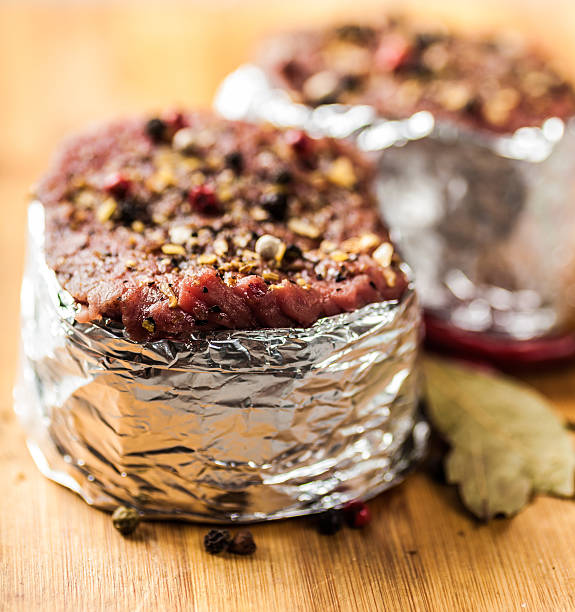
5.1. Grilling Glory: Achieving Smoky Perfection
Direct vs. Indirect Heat: Which to Choose? Direct Heat: Place packets directly over the heat source. Good for quick-cooking items or achieving a slight char on the packet. Requires more frequent turning.Indirect Heat: Place packets on the cooler side of the grill, away from direct flames/coals. Ideal for thicker items or longer cooking times, promoting more even cooking.
Temperature and Time Guidelines for Grilled Foil Packets: Medium Heat (350-450°F / 175-230°C) is generally best.Timing: Varies greatly (15-45 minutes) depending on ingredients and thickness.Delicate fish (e.g., cod, tilapia): 10-15 minutes. Salmon, shrimp: 12-20 minutes. Chicken pieces: 20-30 minutes. Potatoes/root vegetables (small dice): 30-45 minutes.
Tip: Always use tongs to turn and handle hot packets.
5.2. Oven Elegance: Consistent and Controlled Cooking
Optimal Oven Temperatures for Various Ingredients: Generally, 375-425°F (190-220°C) works well for most foil packet meals.Place packets on a baking sheet to catch any potential drips.
Baking vs. Roasting in Foil: The enclosed environment mimics steaming more than true roasting (which requires dry heat for browning). To achieve some browning, see section VII.1.
Timing: Similar to grilling, adjust based on ingredients. Internal temperature checks are reliable.
5.3. Campfire Classics: Rustic and Rewarding
Positioning Packets on Coals or Grates: On Hot Coals: (Not direct flames) Provides intense, even heat. Turn frequently. Double-wrapping with heavy-duty foil is recommended.On a Grill Grate: Elevates packets above direct coals, offering more control.
Safety Precautions for Open-Flame Cooking: Use long-handled tongs. Keep flammable materials away. Ensure the fire is managed responsibly.
5.4. Steaming Sensations: A Gentle Cooking Approach
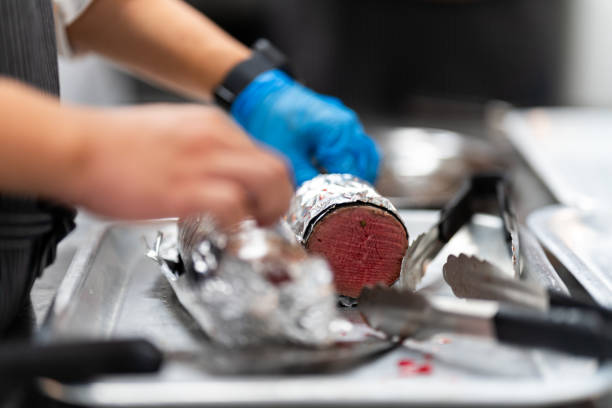
(VI) FLAVOR PROFILING: MARINADES, SPICES, AND SEASONINGS FOR FOIL PACKETS
6.1. The Role of Marinades: Tenderizing and Flavoring
Oil-based marinades help conduct heat and prevent sticking. Acidic components (vinegar, citrus juice) can tenderize but use judiciously to avoid "cooking" delicate proteins or excessive aluminum leaching. Sweet elements (honey, maple syrup) add flavor but can burn if packets leak; non-stick foil is beneficial here.
6.2. Spice Rubs vs. Fresh Herbs: A Flavor Showdown
Spice Rubs: (Dry combinations of spices and herbs) Adhere well and create a flavorful crust.Fresh Herbs: (e.g., rosemary, thyme, oregano, dill, parsley, cilantro) Add bright, aromatic notes. Add heartier herbs (rosemary, thyme) at the beginning; more delicate herbs (parsley, cilantro, dill) can be added towards the end or after opening the packet.
6.3. Balancing Acidity, Sweetness, and Savory Notes
Acidity: Lemon/lime juice, vinegar, wine.Sweetness: Honey, sugar, fruit.Savory (Umami): Soy sauce, Worcestershire sauce, mushrooms, tomatoes.Heat: Chili flakes, cayenne pepper, hot sauce.
6.4. Recipe Spotlight:
Garlic Herb Butter Salmon and Asparagus Foil Packets Ingredients: Salmon fillets, asparagus spears, cherry tomatoes, lemon slices, pats of garlic herb butter (butter, minced garlic, fresh dill, parsley, salt, pepper).Method: Assemble in foil, tent method. Grill or bake until salmon is cooked through.Key Takeaway: Classic combination, quick cooking time.
Spicy Chorizo, Potato, and Bell Pepper Hobo Packs Ingredients: Sliced cooked chorizo, diced potatoes (parboiled), sliced bell peppers and onions, olive oil, smoked paprika, cumin, salt, pepper.Method: Toss ingredients, divide into hobo packs. Grill or cook over campfire coals.Key Takeaway: Hearty, flavorful, great for outdoor cooking.
Lemon Herb Chicken and Zucchini Foil Packets Ingredients: Boneless, skinless chicken breast (cubed), zucchini slices, red onion wedges, olive oil, lemon juice, dried oregano, thyme, garlic powder, salt, pepper.Method: Marinate chicken briefly, combine with vegetables, create flat packets. Bake or grill.Key Takeaway: Healthy, easy, and customizable.
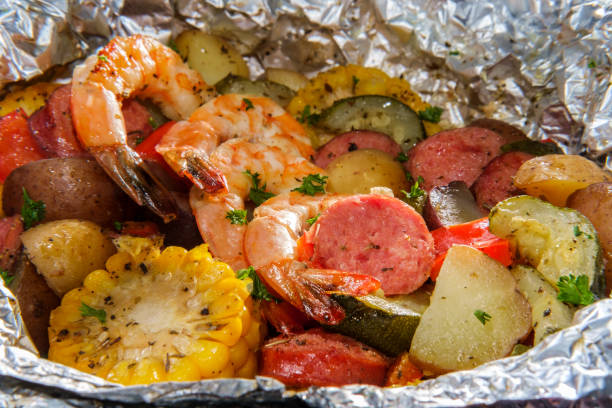
(VII) BEYOND THE BASICS: ADVANCED TIPS AND CREATIVE FOIL PACKET IDEAS
7.1. Achieving Crispy Textures: The "Open-Foil" Finish
Technique: Cook food until almost done in a sealed packet. Then, carefully open the top of the foil for the last 5-10 minutes of cooking (under a broiler, on a hot grill, or in a hot oven) to allow moisture to escape and the surface to brown or crisp up. Monitor closely to prevent burning.
7.2. Layering for Success: Strategic Ingredient Placement
Place longer-cooking ingredients (like root vegetables) at the bottom, closer to the heat source. Position delicate items (like fish or quick-cooking vegetables) on top or surrounded by other ingredients.
7.3. Infusing Smoke Flavor without a Smoker
When grilling, add a small, soaked wood chip packet directly to the coals (not inside your food packet). Use smoked spices like smoked paprika or chipotle powder in your rubs or marinades.
7.4. Foil Packet Desserts: Sweet Surprises
Grilled Banana Boats with Chocolate and Marshmallows Slice a banana lengthwise (keeping skin on one side intact). Stuff with chocolate chips and mini marshmallows. Wrap in foil. Grill for 5-10 minutes until melted and gooey.
Other ideas: Apple slices with cinnamon and oats, pineapple with brown sugar and rum.
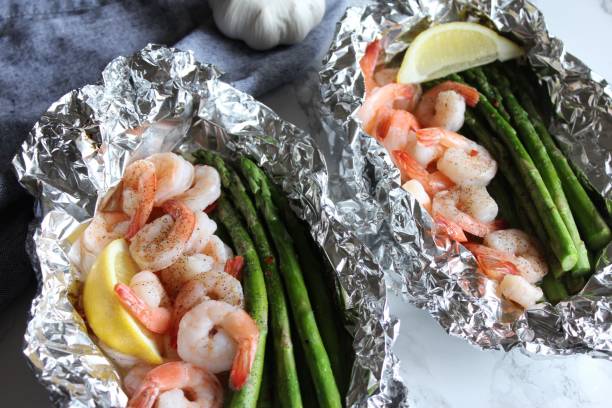
(VIII) TROUBLESHOOTING COMMON FOIL PACKET COOKING CHALLENGES
Problem: Uneven Cooking Cause: Ingredients cut to different sizes, overpacked packets, inconsistent heat.Solution: Cut ingredients uniformly. Don't overfill. Turn packets regularly. Ensure even heat distribution from your source.
Problem: Dry or Overcooked Food Cause: Packet not sealed properly, insufficient liquid/fat, cooked too long.Solution: Ensure a tight seal. Add a splash of broth, wine, or a pat of butter. Cook for the minimum recommended time and check for doneness.
Problem: Foil Tearing or Leaking Cause: Using standard foil for heavy-duty tasks, sharp bones, overfilling.Solution: Use heavy-duty foil, especially for grilling or campfire. Double-wrap if necessary. Be mindful of sharp edges.
Problem: Food Sticking to Foil Cause: Insufficient oil/fat, sugary sauces, non-coated foil.Solution: Lightly oil the foil or ingredients. Use non-stick foil for problematic foods. Add a layer of sliced onions or vegetables as a barrier.
(IX) SUSTAINABILITY SPOTLIGHT: RESPONSIBLE USE AND DISPOSAL OF ALUMINUM FOIL
Recycling: Aluminum is highly recyclable. Clean used foil (free of food residue) can often be recycled. Check local recycling guidelines.Reusing: If foil is relatively clean and intact, it can sometimes be washed and reused for non-food purposes or for covering dishes.Reducing: Use only as much foil as necessary. Consider reusable alternatives like oven-safe dishes with lids when practical.
(X) CONCLUSION: EMBRACE THE EASE AND ELEGANCE OF FOIL PACKET COOKING
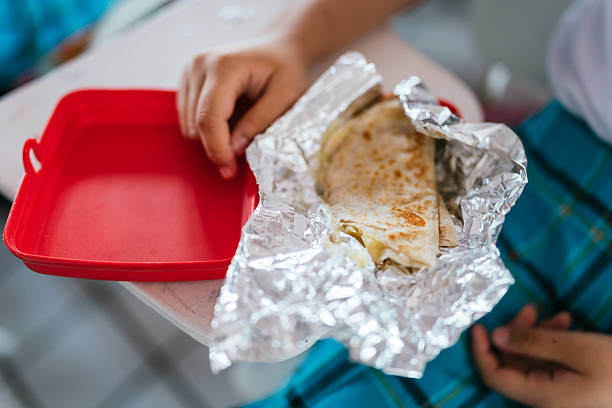
The Key Takeaways for Mastering Foil Packet Cooking:
Choose the Right Foil: Heavy-duty for grilling and campfires.Prep Ingredients Wisely: Uniform cuts for even cooking.Seal Packets Tightly: Crucial for moisture and flavor.Control Your Heat: Avoid overly high temperatures.Don't Overcook: Seafood and vegetables cook quickly.Embrace Flavor: Utilize marinades, herbs, and spices.Cook Safely: Be mindful of acidic foods and responsible disposal.
(XI) FREQUENTLY ASKED QUESTIONS (FAQ) ABOUT PROPER FOIL PACKET COOKING TECHNIQUES
Q: Can I prepare foil packets ahead of time? A: Yes, most foil packets can be assembled several hours in advance and refrigerated. However, if using acidic marinades, it's best to add them just before cooking to prevent excessive aluminum leaching or "cooking" delicate proteins.Q: How do I know when the food inside the foil packet is cooked? A: The most reliable way is to carefully open one packet (away from your face to avoid steam burns) and check the internal temperature of proteins with a food thermometer. Visually, meat should be cooked through, fish flaky, and vegetables tender. The packet will often be puffed up with steam.Q: Is it better to use the shiny or dull side of the aluminum foil facing the food? A: For standard aluminum foil, it makes no practical difference. The slight difference in reflectivity is negligible for cooking purposes. Non-stick foil will have a designated non-stick side that should face the food.Q: Can I reuse aluminum foil from cooking? A: If the foil is only lightly soiled and not torn, it can sometimes be washed and reused for covering items. However, for cooking, fresh foil is generally recommended for hygiene and integrity. Heavily soiled foil should be cleaned as much as possible if recycling.Q: What are the best vegetables for foil packet cooking? A: Quick-cooking vegetables like bell peppers, zucchini, onions, asparagus, mushrooms, and cherry tomatoes are excellent. Root vegetables like potatoes and carrots should be cut small or par-cooked.Q: How can I prevent my foil packets from leaking on the grill or in the oven? A: Use heavy-duty foil, ensure you have a large enough piece to create multiple tight folds for sealing, and avoid overfilling. Placing packets on a baking sheet in the oven can catch any accidental drips. Double-wrapping can also provide extra security.
FINAL THOUGHTS: YOUR CULINARY ADVENTURE WITH FOIL AWAITS
Loc Tu: Pioneering Excellence in Premium Aluminum Packaging Solutions
Why Choose Loc Tu:
✅ Assured Quality & Safety: Crafted from premium, food-grade aluminum, free from harmful impurities, meeting international safety benchmarks.
🔥 Optimal Thermal Properties: Ensures even cooking and excellent heat retention, preserving food temperature and taste effectively.
💪 Durable & Convenient Design: Engineered to resist leaks and dents, providing reliable performance for baking, storage, and transport.
🔄 Versatile Solutions: Our extensive range caters to various applications – from baking and steaming to storing fresh food and takeaway meals.
🌱 Eco-Conscious Packaging: Made from 100% recyclable aluminum, supporting sustainability and reducing plastic waste.
🎯 Brand Enhancement: Optional custom printing available to personalize products and boost your brand visibility.
🚚 Reliable Supply & Delivery: Capable of handling large orders with dependable, on-schedule nationwide shipping.
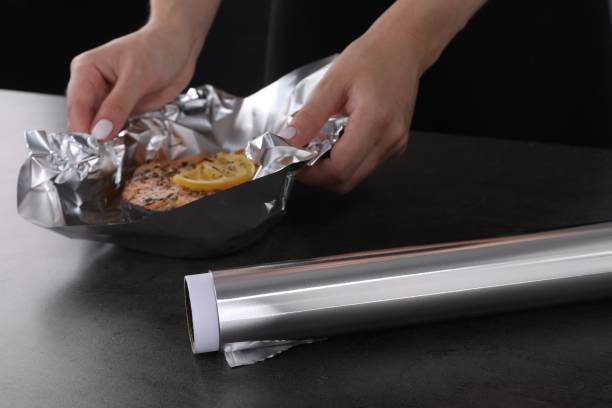
Your Trusted Partner in Food Packaging 📞
📌 LOC TU MANUFACTURING & TRADING CO., LTD
📌 Website: ALUMINUMFOILVN
📌 HOTLINE/ZALO: +84.969.787.309
📌 Facebook: Khay nhom thuc pham
📌 Youtube: Khay nhom thuc pham Loc Tu
📌 Tik Tok: Khay nhom Loc Tu
📌 Shopee: Khay nhom thuc pham Loc Tu
📌 Telegram: Khay Nhom Thuc Pham Loc Tu
📌 Whatsapp: +84.969.787.309
📌 Branch 1 (Hanoi): No. 1 Pham Tu, Beasky Building, Dai Kim Ward, Hoang Mai District, Hanoi
📌 Branch 2 (Binh Duong): No. 68, DX 051 Street, Group 17, Quarter 4, Phu My Ward, Thu Dau Mot City, Binh Duong Province
📞 Contact us today for expert consultation and the best pricing on premium aluminum trays, foil, and food packaging solutions! 🚀
LOC TU PRODUCTION AND TRADING COMPANY LIMITED
Branch 1 (Binh Duong): No. 68, DX 051 Street, Group 17, Quarter 4, Phu My Ward, Thu Dau Mot City.
Branch 2 (Hanoi): No. 1 Pham Tu, Beasky Building, Dai Kim Ward, Hoang Mai District.
Hotline/Zalo: +84.969787309
Website: Khaynhomthucpham.com
Email: [email protected]
